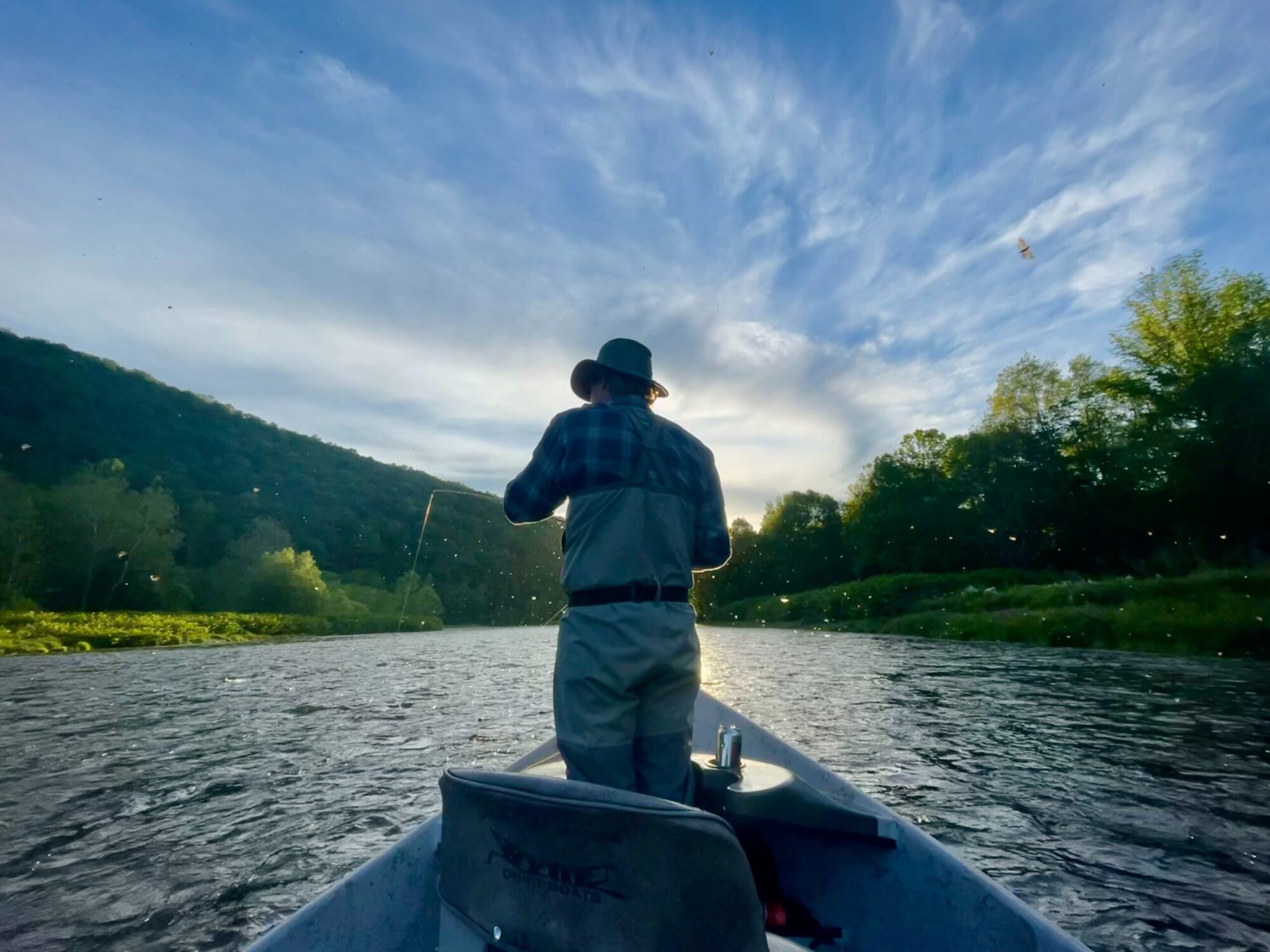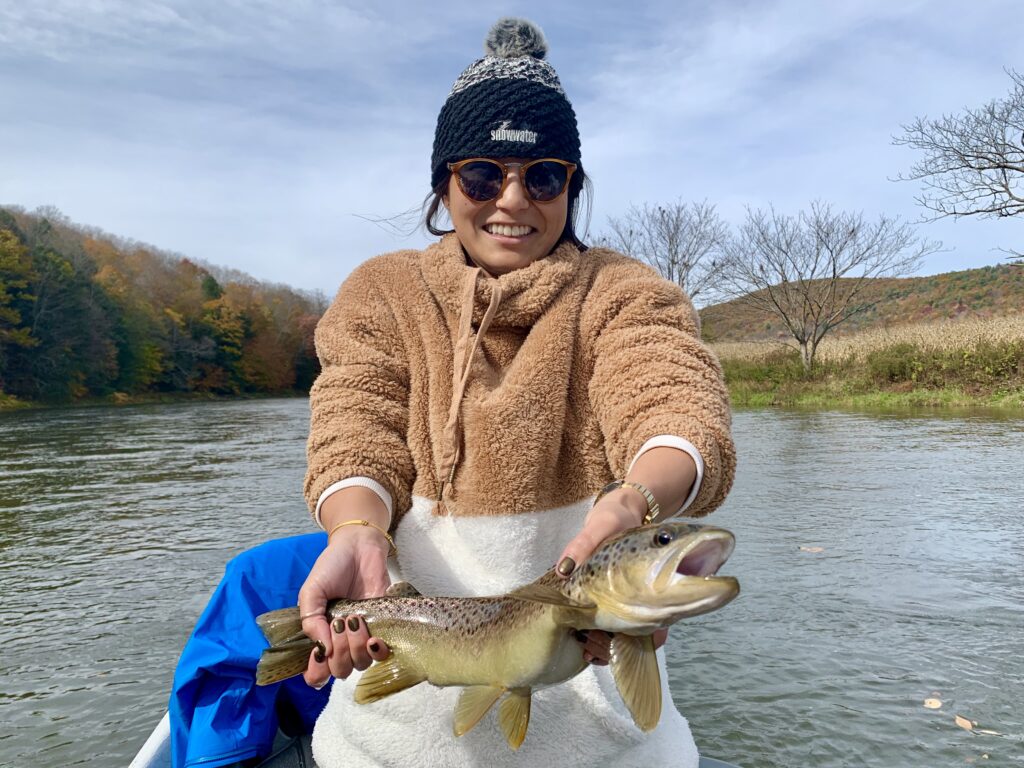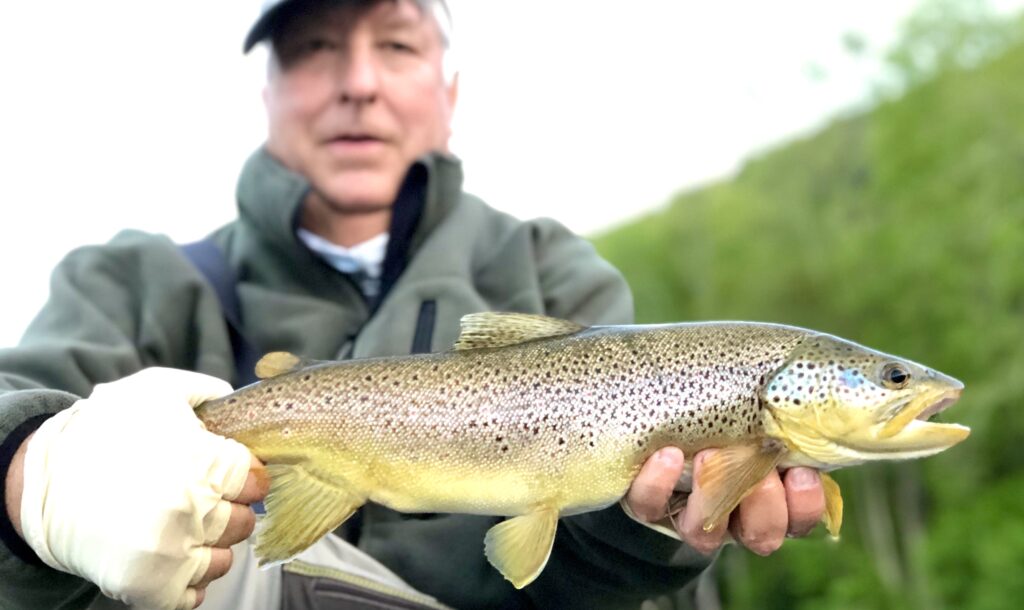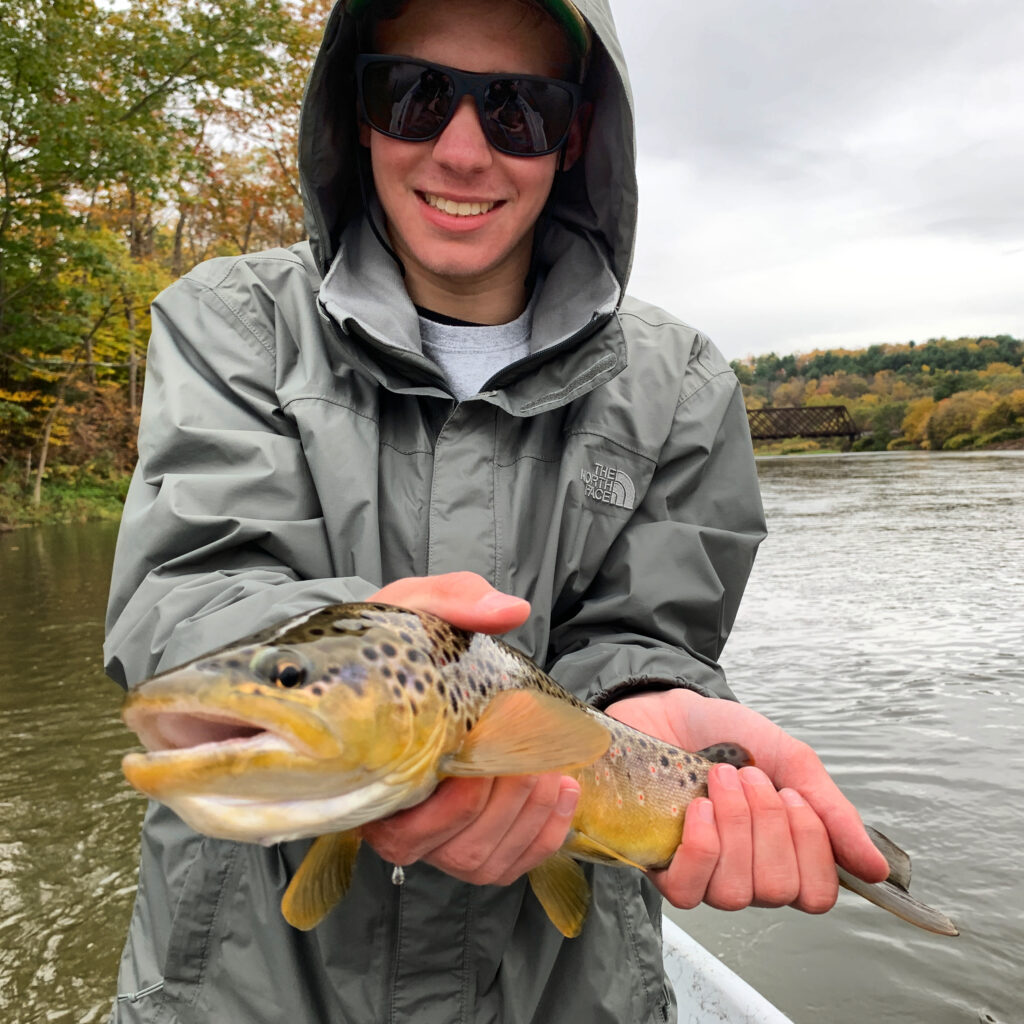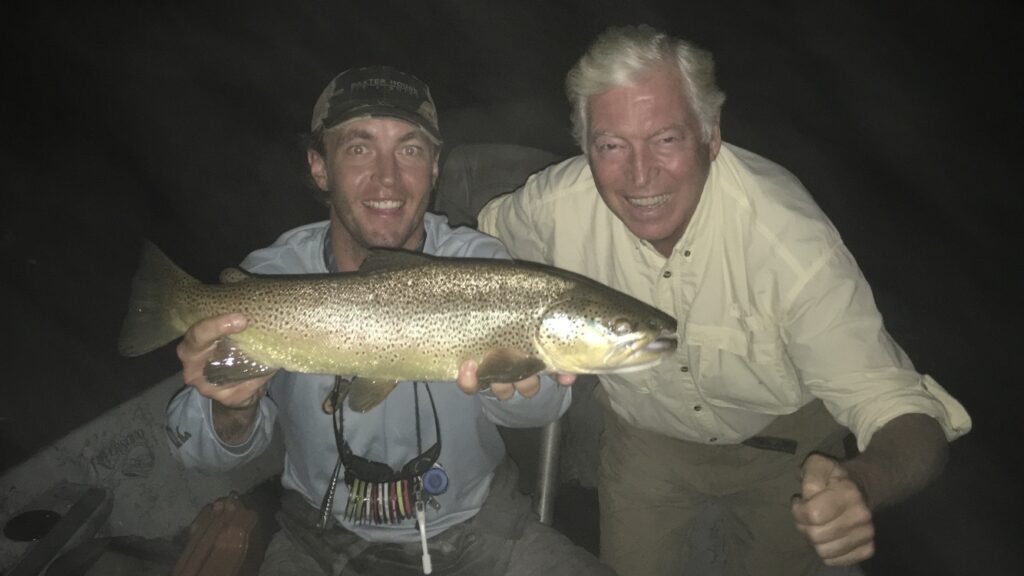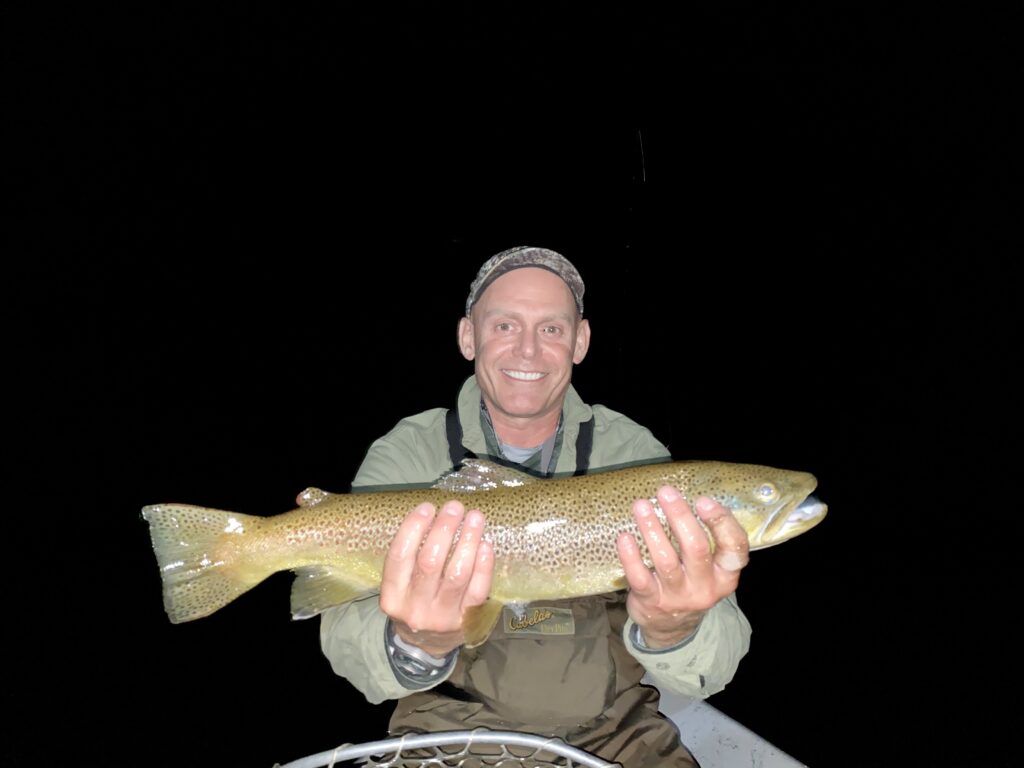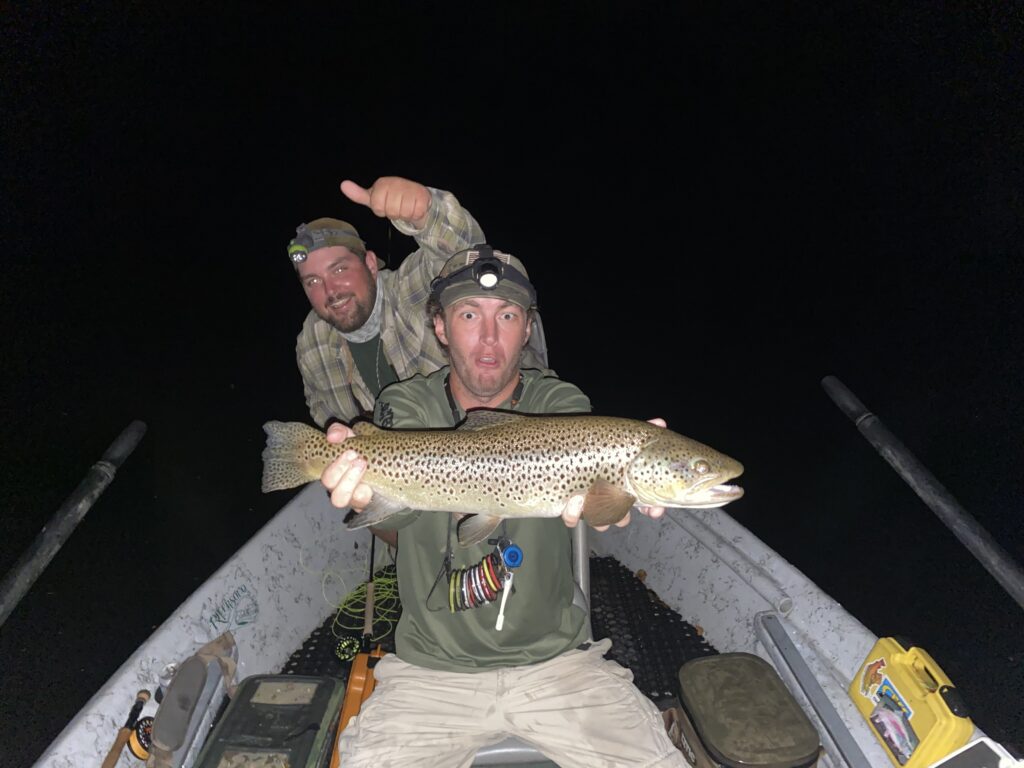Overview
Of the “big three” Catskill Mountain rivers, the west branch is the most known. The west branch of the Delaware river has wading access but is preferred to fish from a guided boat.
During the early season, the river will flow high and clear. This is a great streamer opportunity for large fish. A guide is recommended, as wading is almost impossible from winter runoff. Over 1200 is prime streamer water.
When the bug season arrives in May and June, the west gets many noses sipping bugs and also many anglers. Walk around or take a boat to get around some of the traffic.
In the summer months, the river drops to around 500 CFS but stays ice cold. The main course for the trout is sulphers. They are tough and picky this time of year. They’ve seen many anglers since the spring, so a perfect drift is essential this time of year.
Nearing the end of the summer, the west branch is known to turn off-color during drought seasons. This is due to the Cannonsville releasing low levels of water out of an already shallow reservoir. But don’t worry, the fish adapt and still are able to find a small nymph or a tiny BWO dry.
Flow Chart for West Branch
FISHING THE WEST BRANCH DELAWARE
The West Branch of the Delaware River is very wading friendly at 375-475 CFS levels. When the river is at this flow, it is difficult to get a drift boat down the river. When in this realm, most riffles will require you to walk the boat through the shallow water.
When the West Branch is in the 575-800 level the river is wadable and you also have moving water. At this level, drift boats can easily make it down the river without getting out of the boat. There will be exposed rocks in certain areas that will cause a small scare however most are easily avoidable with channels to make it through safely.
When the West Branch reaches the 1000 CFS mark it becomes a challenge to wade. Only very experienced and physically fit anglers should enter the river. The river at this level is best fished by drift boat.
Above 1500 CFS do not enter the river on foot. At this flow it is very dangerous and not recommended. This is a great flow to float the West Branch and pound the banks with large articulated streamers. Nymphing is almost non-existent and rising fish will show their nose as long as a prolific hatch is coming off.
We offer guided mousing trips on the West Branch of the Delaware River.
PRO TIP
MOVE MOVE MOVE until you find the rising fish. The west is the most consistent river for rising trout in the Catskills. Take your time and WATCH the water before you come up with a game plan. The bigger fish are sleek eaters.
